News 5/17/19
Top News

A large clinician survey finds that training is the #1 predictor of positive user EHR experience. Little correlation was found with the actual EHR product they use.
The report by KLAS’s Arch Collaborative warns that organizations can’t rely on software usability to create physician user success and that poor EHR users are a threat to quality.
Webinars
May 21 (Tuesday) 2:00 ET. “Cloud-Based Data Management: Solving Healthcare’s Provider Data Challenge.” Sponsor: Information Builders. Presenters: Jeremy Kahle, manager of planning and business development, St. Luke’s University Health Network; Shawn Sutherland, patient and member outcomes, Information Builders; Bill Kotraba, VP of healthcare solutions and strategies, Information Builders. Inaccurate provider data negatively impacts revenue cycle, care coordination, customer experience, and keeping information synchronized across systems and functions. SLUHN will describe how it created a single version of provider data from 17 sources, followed by a demonstration of how that data can be used in reports and geospatial analysis. Learn how Omni-HealthData Provider Master Edition provides rapid ROI in overcoming healthcare organization provider data issues.
May 30 (Thursday) 2:00 ET. “ONC Data Blocking Proposed Rule: What Health Systems Need to Know.” Sponsor: Philips PHM. Presenter: Greg Fulton, industry and public policy lead, Philips. Proposed data-blocking regulations could specify fines, disincentives, and de-certification of providers who don’t provide an API for patients to extract all of their data. This webinar will describe who is deploying APIs, the scope of data and third-party apps that can be used, the seven costs that do not count as a data-blocking exception, and the health system protections that don’t involve using a vendor. It will also provide examples of data blocking and further exceptions.
Previous webinars are on our YouTube channel. Contact Lorre for information.
Acquisitions, Funding, Business, and Stock

Glytec receives a patent allowance for interactions between its insulin titration software and connected diabetes technologies like smart insulin pens and pumps and continuous glucose monitoring systems.
Axios number-crunchers determine that healthcare’s top CEOs made a combined $2.6 billion last year, with nearly half of those leading pharmaceutical companies. Allscripts CEO Paul Black took home $7 million, while Cerner’s Brent Shafer earned nearly $10 million. McKesson’s John Hammergren was paid $18 million, including a $4 million bonus for hitting financial targets even though the company faced several lawsuits. Community Health Systems CEO Wayne Smith, who continues to sell off unprofitable hospitals, received a similar perk for reasons that were unrelated to patient outcomes.
Sales
- Great Lakes Medical Imaging (NY) will implement NextGate’s enterprise master patient index.
People

National urgent care provider American Family Care hires Claudius Moore (The South Bend Clinic) as VP of IT.
Announcements and Implementations

Hospital operator HCA Healthcare will roll out its SPOT algorithm and alert system for the early detection of sepsis to emergency rooms in the coming months. It also plans to expand the technology’s capabilities to include the detection of post-operative complications, early signs of deterioration, and shock in trauma patients.
Baptist Health implements PatientPing’s real-time care alert software for its ACO members in Louisiana, Kentucky, and Indiana.

The HCI Group will lead Texas-based Val Verge Regional Medical Center’s Meditech Expanse implementation.
InterSystems releases a new version of its TrakCare EHR – used in 25 countries, but not in the US — that is built on its IRIS for Health data platform that supports FHIR standards.
Privacy and Security

Hospitals scramble to install a security update from Microsoft after the company discovers a zero-day vulnerability in older systems with Remote Desktop Protocol that make them prime targets for ransomware attacks. “The thing that makes this one so dangerous,” says Allina Health’s threat and vulnerability management expert Jeremy Sneeden, “is that you don’t need any access. A lot of vulnerabilities, you need a username and password, or some sort of access to the machine, to make the vulnerability work. But these — I guess they’re calling them ‘wormable’ now — they don’t need credentials, and that’s why they spread so quickly.”
Other
A ProPublica investigation of bitcoin transactions finds that at least two US companies that offer ransomware recovery services sometimes simply pay the hacker’s demanded ransom, then bill the client multiples of that amount for technical work and try to sell them ongoing security services. The recovery firms say their clients don’t want to deal directly with the extortion aspects of paying a ransom, don’t want figure out how to buy bitcoin, or want to avoid interacting with the hackers directly. Proven Data’s website says that paying ransom is a last resort since it supports criminal activity and carries no guarantee of recovering data, but its CEO admits that most ransomware is too hard to break so it’s easier just to pay. He says hospitals are among his clients. Legal experts say that serving as a ransomware payment intermediary could be construed as criminal conspiracy.

The drug company behind a new Botox-like product pays for luxury trips to Cancun for a dozen dermatologists who were coached to talk the product up on social media and post photos of themselves on the supplied model runway and confetti-throwing station, possibly violating FTC’s requirements on disclosures. Evolus, which targets selfie-obsessed millennials who are increasingly undergoing cosmetic surgery, says it isn’t required to report doctor payments to the Open Payments database because it doesn’t sell anything that Medicare or Medicaid pays for, which allows the company’s salespeople to “be very closely involved in high touch and customer-centric and engage with these practices outside of their traditional business hours.”
Joint Commission will give accredited hospitals real-time access to their quality measures that are submitted via its ECQM reporting process. The system’s cloud-based technology is provided by Apervita.
An article published in NEJM suggests that healthcare adopt analytics techniques that are common in the intelligence community, such as:
- Using less-structured data storage, such as data lakes, to reduce data modeling
- Incorporating automated metadata tagging to enhance searching and association of disparate items
- Using natural language processing
- Implementing cell-level security to manage data object access
- Replacing hypothesis-based research with mining for unsuspected correlations

The Journal of Reproductive Health finally redacts a company-funded study claiming the $330 Daysy thermometer from Swiss company Valley Electronics identifies fertility with 99.4% accuracy. Concerns about the study’s validity had been raised by researchers over a year ago. Reproductive researcher Chelsea Polis spearheaded the redaction efforts, first emailing the company and then the journal to point out the study’s questionable methodology, which included a low participation rate, poorly designed questionnaires, and cherry-picking results for marketing purposes.

Theranos whistleblower Erika Cheung reflects on her decision to share her misgivings about the company’s business practices with CMS. “I was so paranoid about Theranos and them spying on me, I had a burner phone just to call the Centers for Medicare and Medicaid Services because I was so scared that I was going to get sued or they were going to come after me. Being followed is a very terrifying thing. That was probably the hardest thing: just conquering your own fear and just saying, ‘OK, whatever happens, you’re just going to get through it.” Cheung has since founded the nonprofit Ethics in Entrepreneurship to help startups avoid a Theranos-like fate.
Sponsor Updates
- EClinicalWorks will exhibit at DDW 2019 May 18-21 in San Diego.
- KPMG adds Waystar’s social determinants of health data to its Clinical Intelligence platform.
- Ellkay, Healthfinch, and Healthwise will exhibit at Cerner NARUG May 20-22 in Richmond, VA.
- Ensocare will exhibit at the ACMA Northern California Chapter meeting May 28-29 in Napa, CA.
- EPSi will exhibit at HFMA Region One May 21-22 in Uncasville, CT.
- Healthgrades names the 2019 Patient Safety Excellence Award and Outstanding Patient Experience Award recipients.
- Imprivata will exhibit at NTI May 21-23 in Orlando.
- AMIA inducts Intelligent Medical Objects CMO Andrew Kanter, MD and Physician Informaticist Jonathan Gold, MD into the Fellow of the American Medical Informatics Association class of 2019.
- Kyruus will exhibit at the Healthcare Marketing & Physician Strategies Summit May 21-23 in Chicago.
- NextGate publishes a new case study, “4 Innovations in Patient Identification.”
- OptimizeRx will present at the B. Riley FBR Investor Conference May 22-23 in Beverly Hills.
- Waystar enhances its Agency Manager solution with invoice verification capabilities.
- The Silicon Valley Business Journal features Vocera CNO Rhona Collins, DNP, RN.
- Meditech publishes a new case study booklet, “The Innovators: Meditech Customers in Action.”
- The latest version of TrakCare from InterSystems extends its mobile capabilities to all clinical workflows.
Blog Posts
- The Infinity Gauntlet of Healthcare Interoperability (EClinicalWorks)
- The Importance of Solid Workflows for Automation in Healthcare (The HCI Group)
- Cybersecurity Alert: Hospital cyber-attacks are more prevalent and successful than ever (HCTec)
- User Story: Epic Hospital Reduces Logon Times by 80% (Goliath Technologies)
- 3 Recent Safety-Related Medication Labeling Changes (Healthfinch)
- Interoperability and other highlights from the first Hyland Healthcare Forum San Diego (Hyland)
- Humana Leveraging Data Analytics to Enhance Cancer Care (Imat Solutions)
- How Healthcare Interoperability Affects Information Security (Impact Advisors)
- 4 Ways to Improve Cyber Awareness (Optimum Healthcare IT)
- Understanding EPCS: What you can do to reach EPCS success (Imprivata)
- Introducing revenue flow: A more efficient way of thinking about your revenue cycle (Nordic)
- Access Spotlight: Meet Tina Anderson, VP of Professional Services (Access)
- Data: Healthcare’s Double-Edged Sword (NextGate)
- Looking ahead to greater mobility for nurses at Woman’s Hospital (Meditech)
Get Involved
- Join my Rolodex to provide occasional news reaction or ideas
- Contribute regularly as a provider CIO, IT director, or informatics nurse (anonymous or not)
- Be interviewed (providers)
- Deliver an educational webinar (providers)
- Sponsor
- Report a news item or rumor (anonymous or not)
- Sign up for email updates
- Connect on LinkedIn
- Contact Mr. H

































































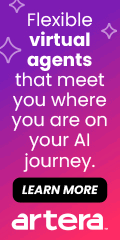


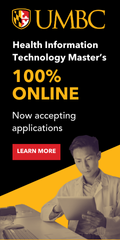

























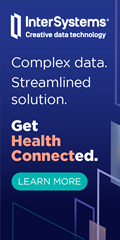













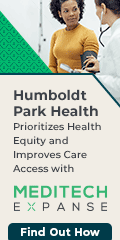





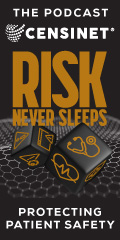















Would have liked to have seen more about Expanse here. Would like to see more about it on this site…